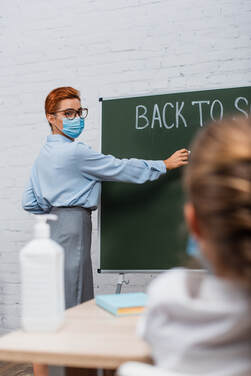Making sure your child maintains healthy vision and any vision problems are corrected is vital for their educational and social development. There are several things you can do to help keep your children’s eyes healthy this school year. Consider the following suggestions: Watch for signs of eye problemsOlder kids can let you know if they are having trouble with their vision. But younger children may have trouble explaining the problem or even be unaware something they are experiencing is related to their vision. Some signs of vision problems in children are obvious, while others are more subtle. Possible signs include:
Take screen breaksBack to school may often mean homework assignments on the computer or tablet. In addition to school work, kids might be spending time on their phones or watching TV. Remind them to take frequent breaks. Too much screen time can lead to eye strain. Symptoms of eye strain include:
According to the Mayo Clinic, taking frequent breaks using the 20-20-20 method can help. Encourage your children to take a break from electronic devices every 20 minutes by looking 20 feet away for about 20 seconds. Get the right eyeglassesIf your children wear glasses, make sure the lenses are scratch-resistant and made of polycarbonate, which is shatterproof. The frames should fit well and not be too large. If their glasses are slipping, consider adding ear grips or a strap that helps keep the glasses in the correct position. Some children, especially older kids, may prefer contact lenses. In some cases, contact lenses may also be appropriate for younger children. Protect eyes during sportsWearing the right protective eyewear during sports is vital to prevent your child from sustaining an eye injury. Eye injuries in children are common. According to the Vision Council, about one-third of the eye injuries sustained in the United States occur in children. Children should wear properly-fitted protective eyewear made of polycarbonate lenses. The eyewear should be approved by the American Standards for Testing and Materials. Kids should wear protective eyewear when participating in several types of sports, such as ice hockey, baseball, and racquet sports. Encourage frequent hand washingLittle hands can carry big germs and lead to common eye infections, such as conjunctivitis. Remind kids to wash their hands frequently and avoid rubbing their eyes, which can spread germs. With little children, teach them how to perform proper handwashing. According to the Centers for Disease Control and Prevention, you should lather with soap and water and wash your hands for 20 seconds before rinsing. Have an eye examAccording to the American Academy of Ophthalmology, children should have a vision screening around the time they enter preschool or sooner if they are having vision problems.
The start of a new school year can bring new opportunities, challenges, and friendships for your children. Maintaining healthy vision habits plays a role in making sure your kids are prepared to meet their educational goals. We are happy to answer any questions. To discuss whether an appointment with one of our eye doctors would be appropriate at this time, please call our office at 508-746-8600. Comments are closed.
|
EYE HEALTH BLOGCategories
All
Archives
July 2024
|
|
Kadrmas Eye Care New England
55 Commerce Way, Plymouth, MA 02360
14 Tobey Road, Wareham, MA 02571 133 Falmouth Road (Rt 28), Mashpee, MA 02649 |
Phone Number:
1-508-746-8600 Hours: Monday through Friday — 8 AM – 4:30 PM |


 RSS Feed
RSS Feed
